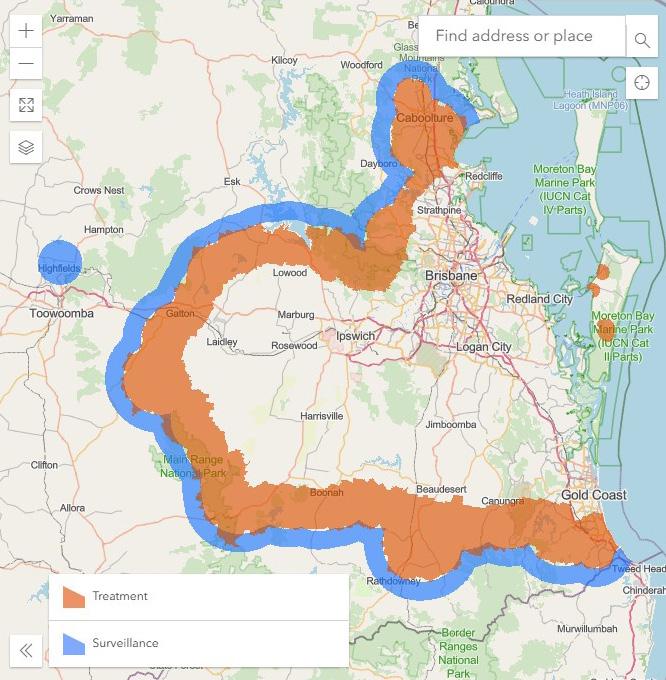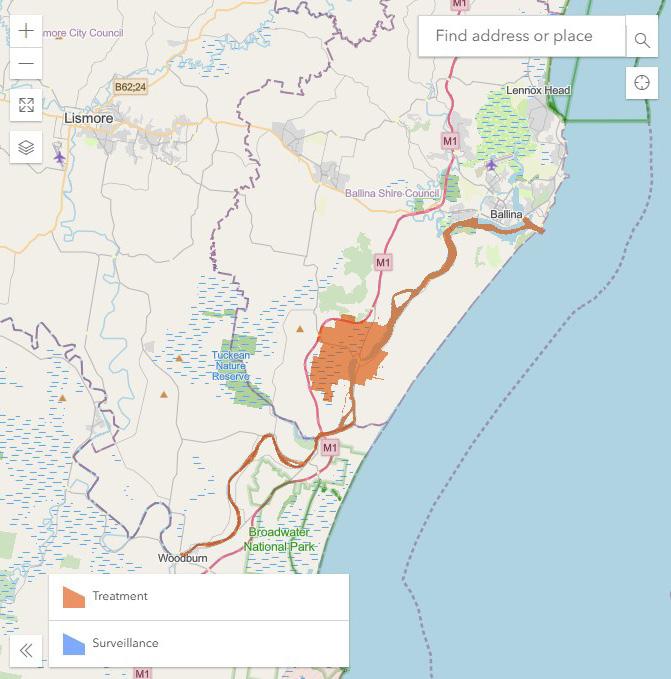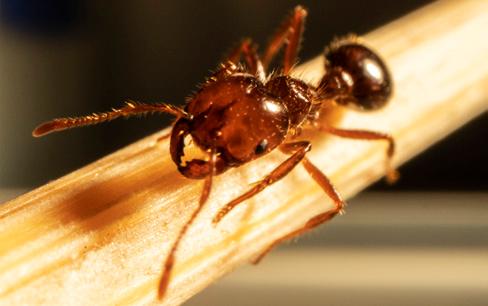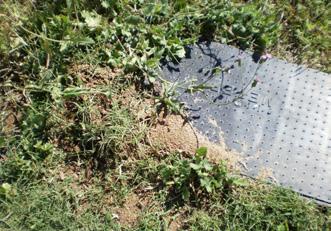
5 minute read
Protect your farm from fire ants
National Fire Ant Eradication Program
Fire ants are small but aggressive pests that can turn your thriving berry farm into a battlefield. But you’re not alone in this fight.
The National Fire Ant Eradication Program (the Program) is working to stop this growing biosecurity threat, and as a grower, you play a vital role in helping to eradicate fire ants from Australia by 2032. Here’s why protecting your farm matters and how you can help safeguard Australian agriculture from fire ants.
Why eradicate fire ants?
Fire ants are among the world’s most invasive pests, causing devastating impacts on our health, environment, economy, and outdoor way of life. They destroy crops, machinery, plants, and seeds – turning paddocks into wastelands and disrupting supply chains. If left untreated, fire ants could infest 97% of Australia and cause $381 million in agricultural losses annually. Beyond damaging farms, fire ants pose risks to you, your workers, pets, livestock, and native animals. When disturbed, they swarm en masse and sting multiple times. Their stings cause intense burning and itching that can last for hours. Multiple stings can feel like your body is on fire, and small pustules may form at sting sites, which can become infected. In rare cases, fire ant stings can trigger life-threatening allergic reactions known as anaphylaxis.
Where are fire ants found?
The Program has currently contained fire ants to a small area, predominantly in South East Queensland. It is also managing discrete outlier responses in parts of northern New South Wales, Toowoomba, and the Sunshine Coast.


Fire ants are highly mobile, travelling over and under the ground, flying up to 5 km, and even forming rafts on water to relocate their colony. However, the biggest cause of fire ant spread is human-assisted movement of materials that can carry fire ants, such as soil, hay, mulch, manure and other landscaping materials.
How to protect your farm?
You can take proactive steps to stop fire ants on your farm:


BE AWARE & MAKE SURE YOUR STAFF ARE AWARE
Know what to look for – fire ants are copper brown in colour with a darker abdomen (which is the far end and largest body region), measure 2–6 mm in size, and vary in sizes within one nest.
They nest in gardens, lawns, crops, piles of organic matter, near dams, along irrigation lines and edges of farmed land.

CHECK CAREFULLY & WEAR PROTECTIVE CLOTHING
Check a suspect nest – wear protective clothing, boots, and gloves.
Poke the nest with a long stick and observe from a distance.
Watch for their colour, size, and swarming behaviour and video the activity if possible as this helps with identification
REPORT IMMEDIATELY
Ensure your staff all know what to look for and that they report any sightings immediately to supervisors.
Supervisors & Farm Owners please report fire ants and nests immediately – report online or call 132 ANT (13 22 68).
If possible, take a photo or video to assist with identification.
Depending on your location, the Program may treat the nests, or you may need to self-treat. www.fireants.org.au
Follow biosecurity rules – implement fire ant-safe work practices, check fire ant biosecurity zones, and follow movement controls before handling or moving materials that can carry fire ants originating from within the zones.
You can complete FREE fire ant training at www.fireants.org.au – learn more about fire ants, how to treat, and manage them.
How is treatment delivered and is it safe?
The Program leads eradication efforts in the eradication treatment area, while Queensland’s Fire Ant Suppression Taskforce (FAST) supports activities in the suppression treatment area.
Eradication treatment area – all properties receive multiple rounds of treatment over several years, whether fire ants are visible or not.
Suppression treatment area – you can self-treat fire ants to control populations until eradication treatment reaches your area.
Check the fire ant activities map to see if your farm is in an eradication or a suppression area.
Fire ant eradication treatment is safe, effective, and approved by the Australian Pesticides and Veterinary Medicines Authority. Treatment consists of small pieces of corn grit soaked in soybean oil and a low concentration of insect growth regulator. Foraging ants take the granules back to their nest, where it stops the queen from reproducing viable and reproductive offspring – leading to the colony naturally dying off.
Treatment is delivered using drones, helicopters, fixed wing planes, utility terrain vehicles, and handheld spreaders. All methods are minimally disruptive, so your farm can keep operating while managing fire ants.
Will reporting fire ants disrupt my farm operations?
If you’re in the eradication treatment area, the Program will work with you to create a safe and effective treatment plan. Completing a property information form helps ensure that access considerations like locked gates, animals, livestock, crops, or water bodies are factored into the approach.
If you’re in the eradication treatment area, you can work with the Program to minimise any impact on certification and production. Treatments can be scheduled after harvest or during rotation periods. Program officers can provide tailored treatment options that align with organic standards, ensuring compliance while protecting your farm from fire ants.
If you’re in the suppression treatment area, FAST can help you self-manage fire ants on your farm with free treatment products and support.
Eradicating fire ants is a shared responsibility
Stopping fire ants is a shared responsibility and we all must work together. By staying vigilant, reporting sightings, and working with the Program, berry growers can protect their farms and the entire industry from this super pest.



